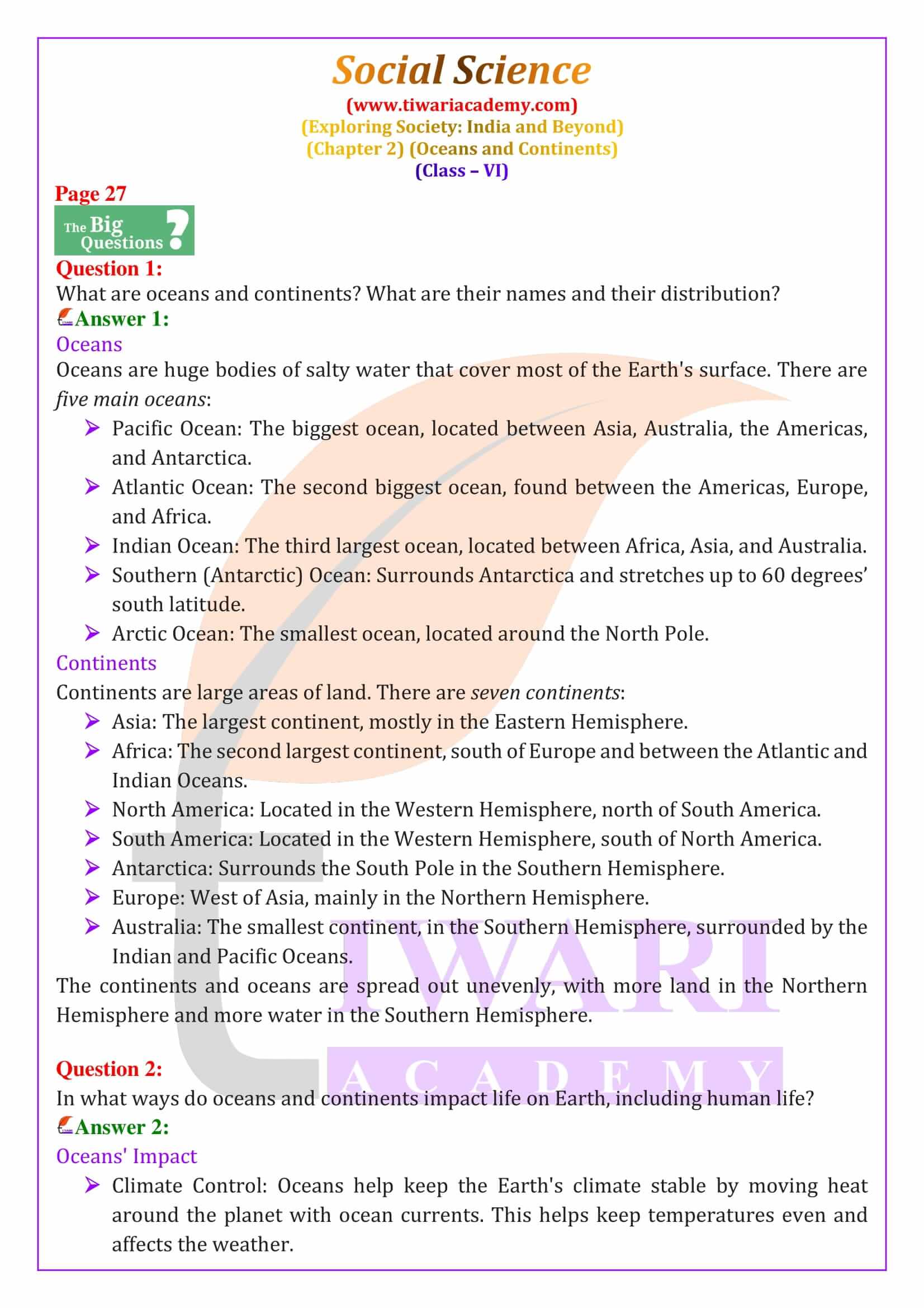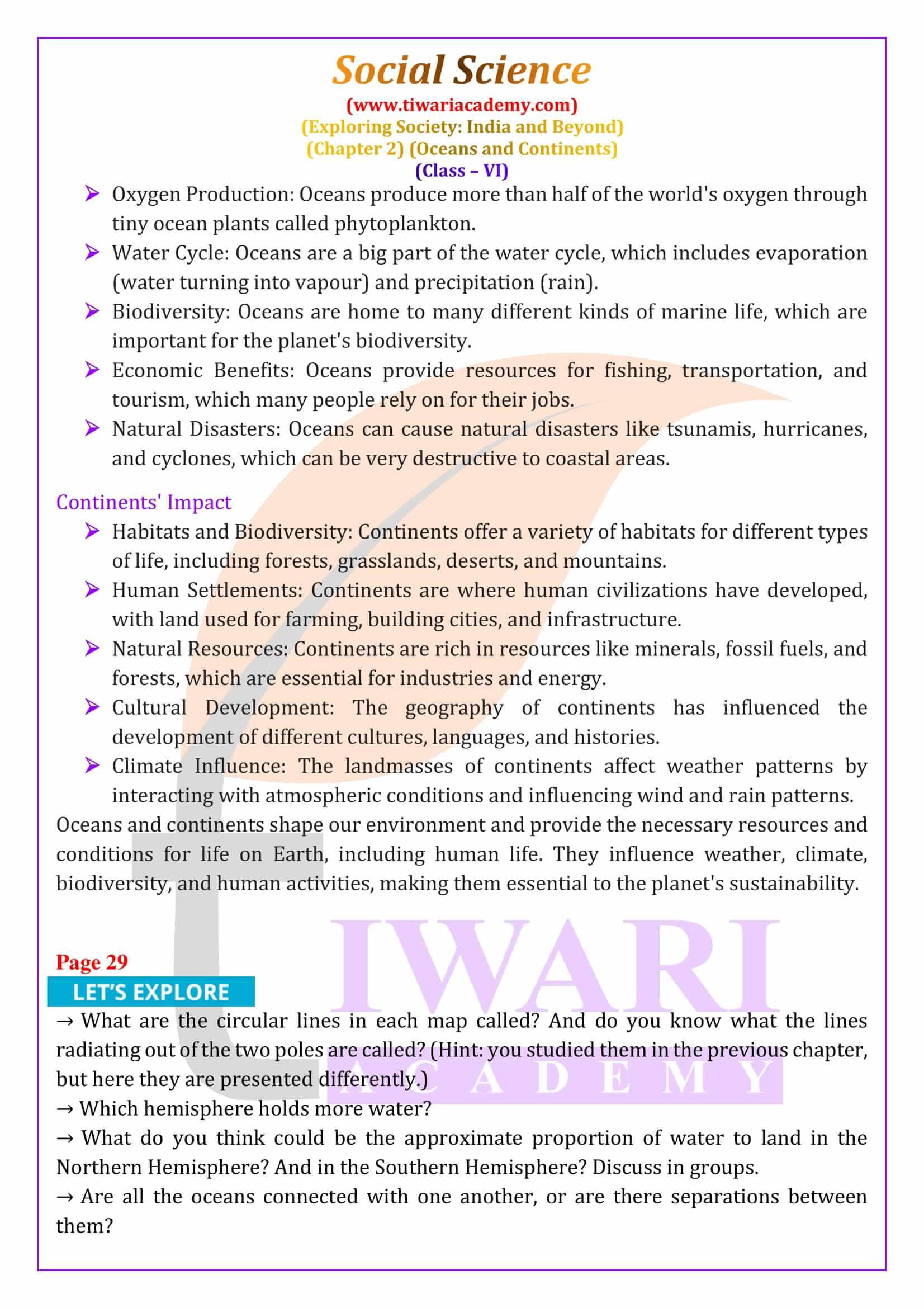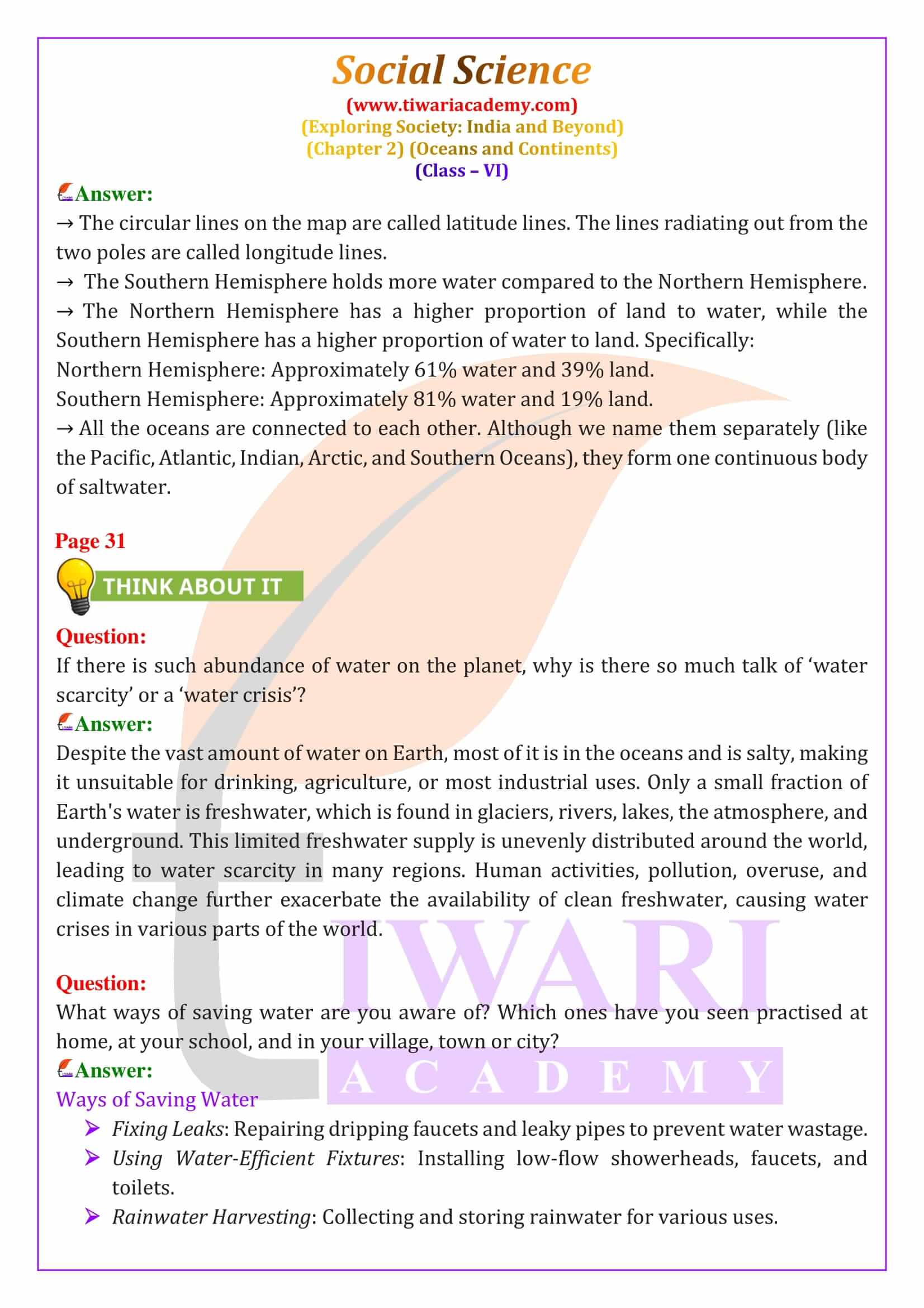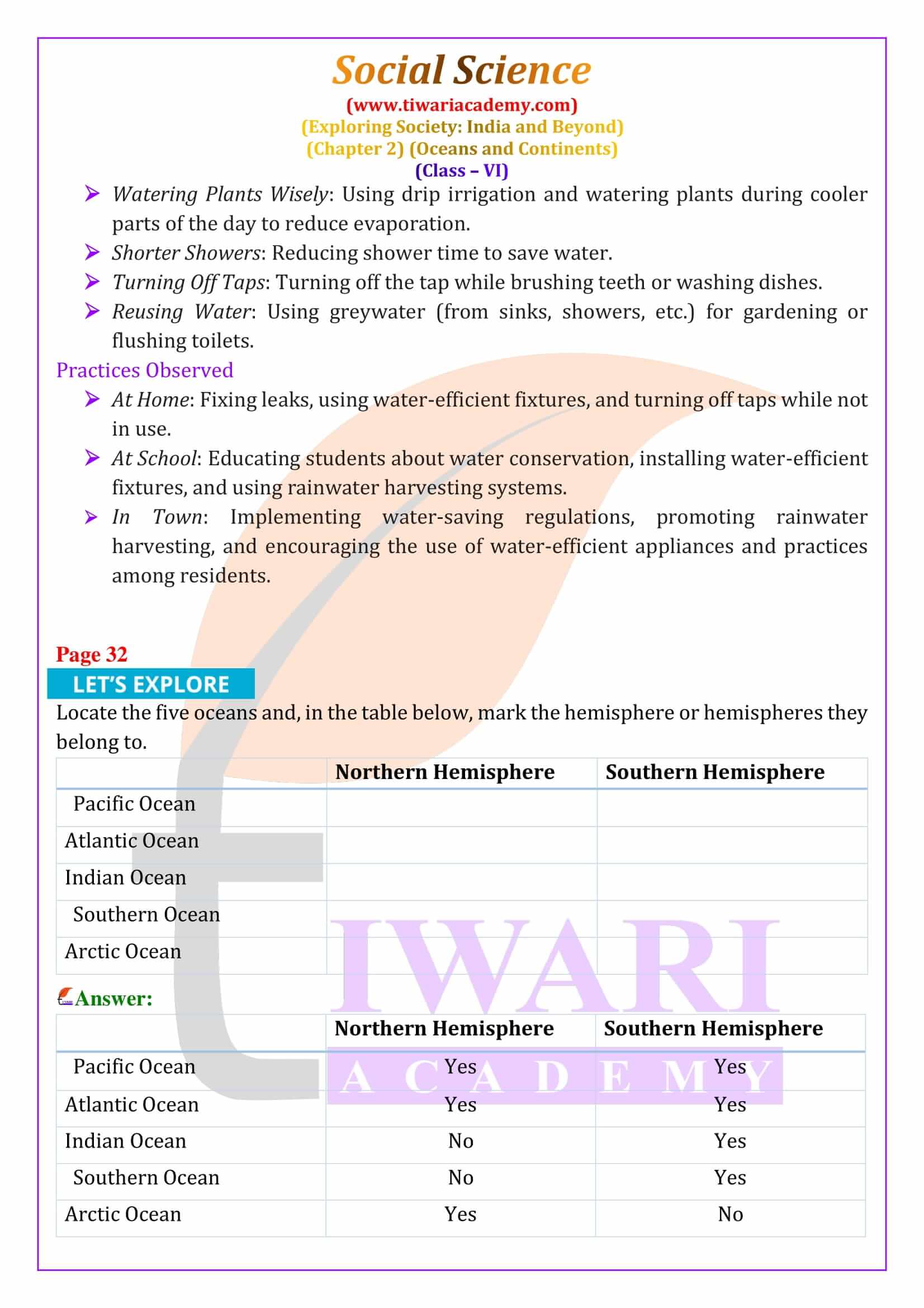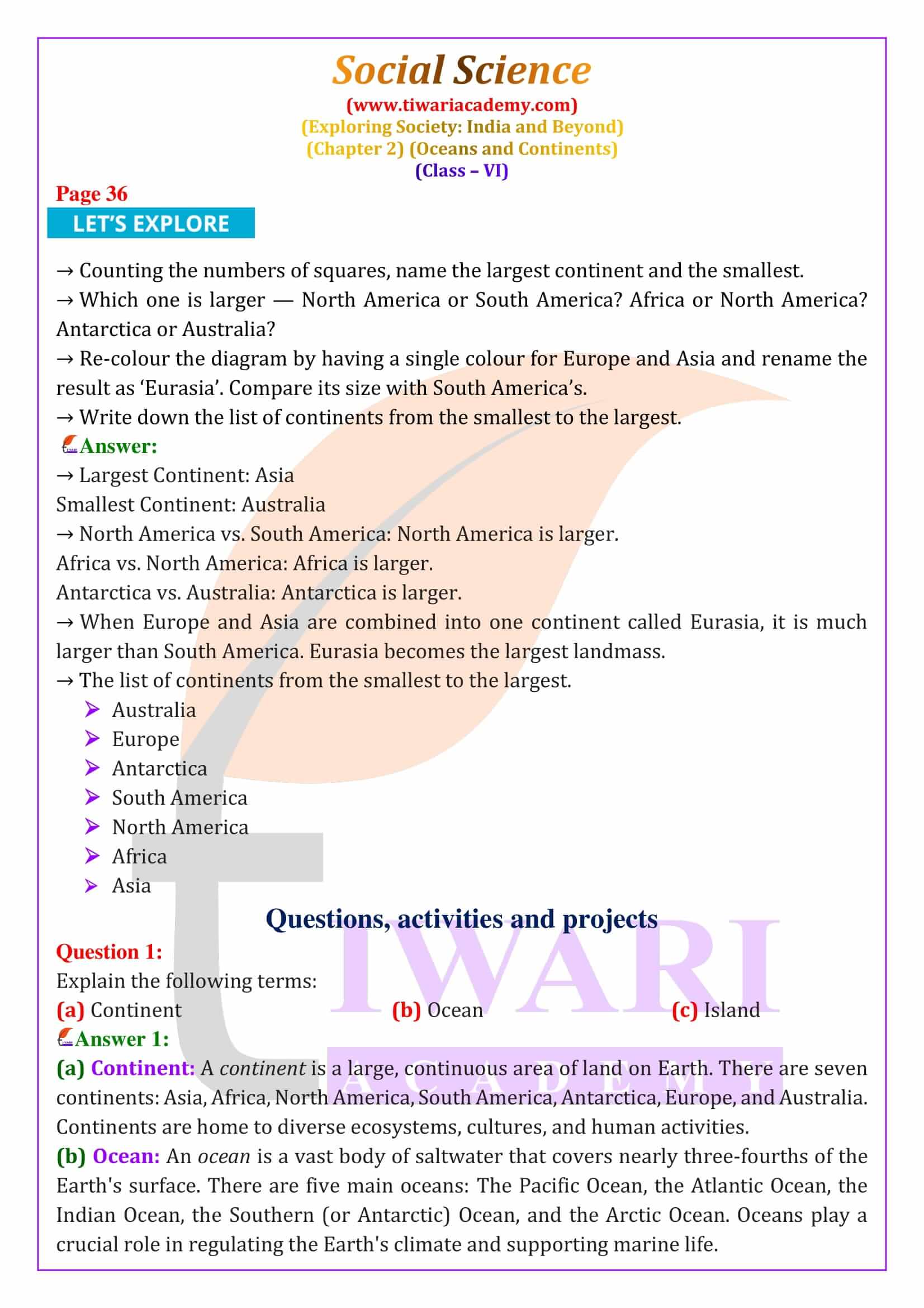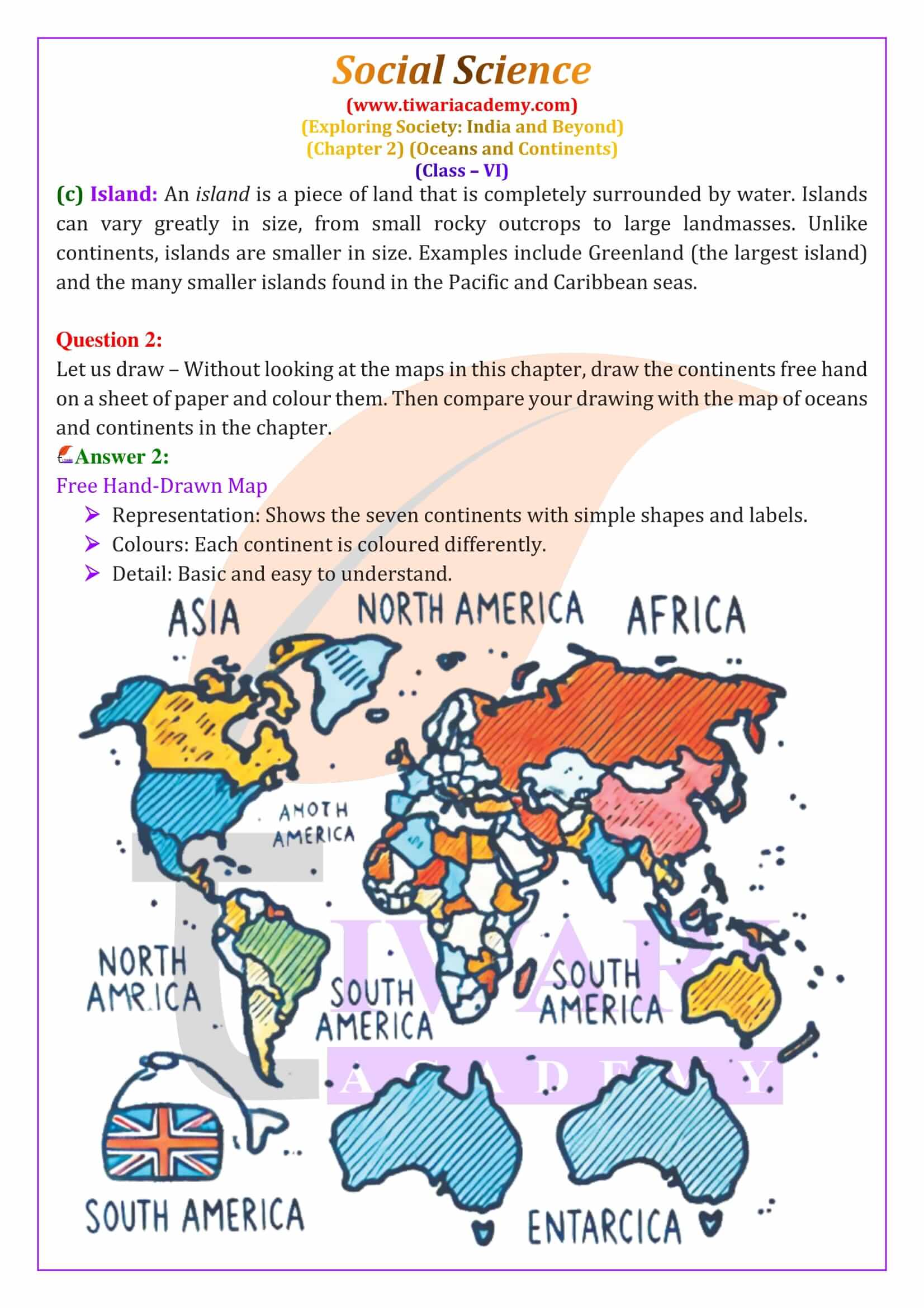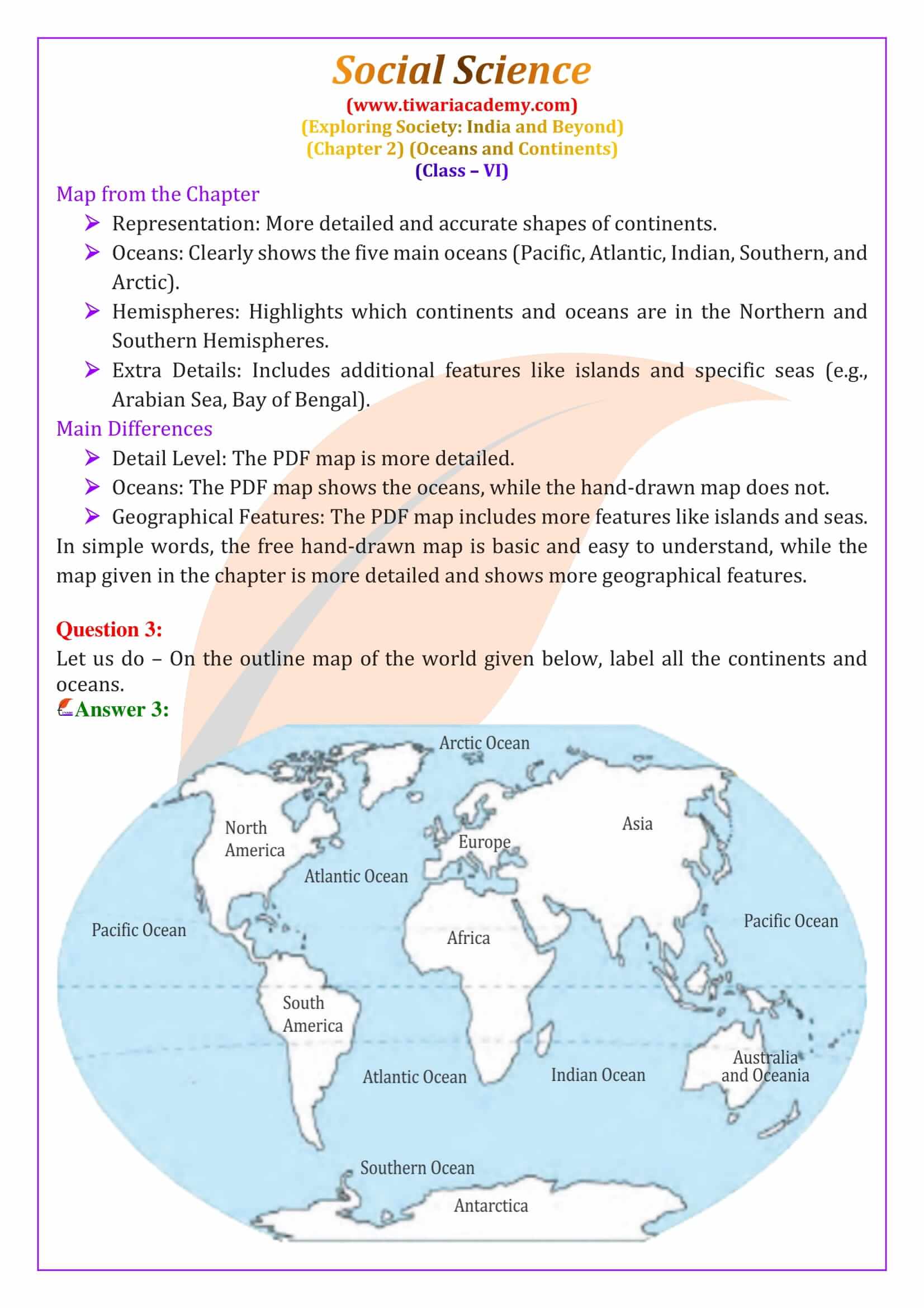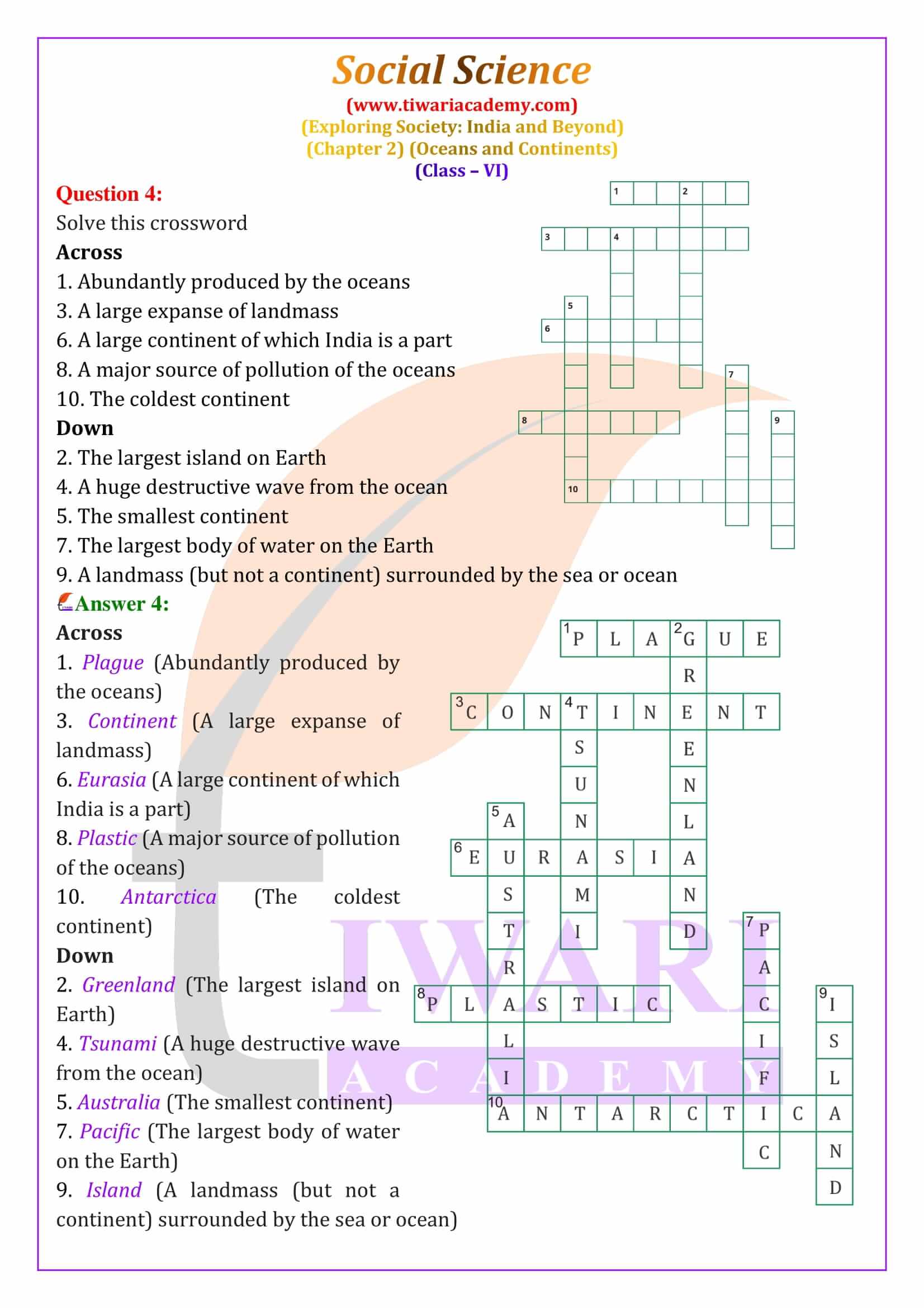NCERT Solutions for Class 6 Social Science Chapter 2 Oceans and Continents revised for session 2025-26. Get here Class 6 Social Science Exploring Society – India and Beyond India Beyond Geography Chapter 2 Question answer in detail with exercises.
Class 6 Social Science Chapter 2 Oceans and Continents Question Answers
Introduction to Chapter 2: Oceans and Continents
The Earth is a vast planet covered mostly by water, which makes it appear blue when viewed from space. About three-fourths of the Earth’s surface is covered by water, and these large water bodies are called oceans. The remaining portion of the Earth’s surface is land, which forms large continuous areas known as continents. Both oceans and continents play a crucial role in shaping our environment, influencing the climate, and affecting all forms of life, including humans. Understanding the distribution and impact of oceans and continents is essential for grasping how our planet functions.
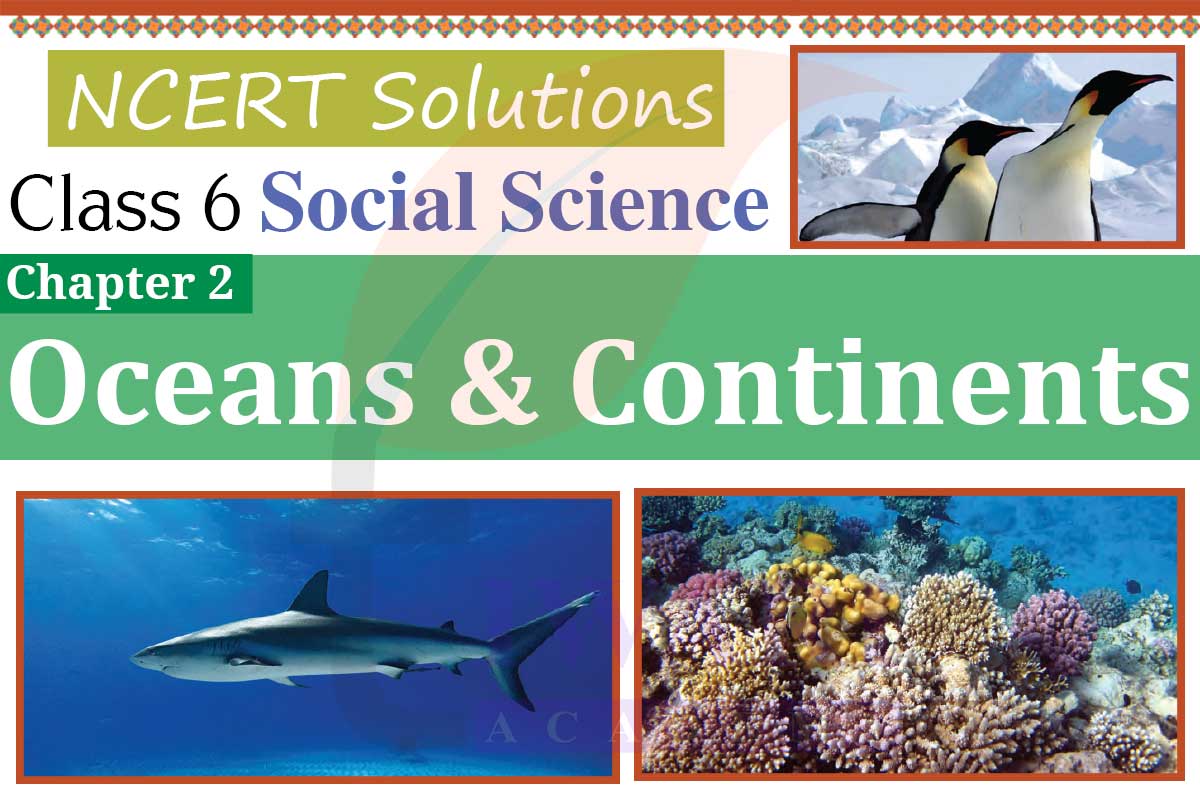
Distribution of Oceans and Continents
Oceans and continents are not evenly distributed across the Earth. The Northern Hemisphere has more land compared to the Southern Hemisphere, which has more water. The five major oceans—the Pacific, Atlantic, Indian, Southern, and Arctic—are interconnected, forming a continuous body of water that influences weather patterns, marine life, and human activities. Continents, on the other hand, are large landmasses that can be counted in different ways, leading to the classification of four to seven continents, depending on how they are grouped.
The Importance of Oceans
Oceans are vital for life on Earth. They regulate the climate, provide a habitat for a diverse range of marine life, and are a significant source of food and resources for humans. Despite covering most of the Earth’s surface, the water in oceans is salty and not suitable for drinking. However, oceans contribute to the water cycle by supplying moisture that eventually falls as rain, nourishing the land. Oceans also produce more than half of the world’s oxygen, making them essential for sustaining life on Earth.
The Role of Continents
Continents are the large landmasses where most human activities take place. They are home to a diverse range of ecosystems, cultures, and civilizations. The seven continents—Africa, Antarctica, Asia, Europe, North America, South America, and Australia—each have unique characteristics, including different climates, landscapes, and biodiversity. Understanding the geography of continents helps us appreciate the diversity of life and the interconnectedness of ecosystems across the globe.
Oceans and Natural Disasters
Oceans are not just sources of life; they can also give rise to natural disasters. Storms, cyclones, and tsunamis originate in the oceans and can cause significant damage to coastal regions. For example, tsunamis, caused by underwater earthquakes or volcanic eruptions, are massive waves that can travel vast distances, leading to widespread destruction when they reach land. Effective disaster management and early warning systems are crucial for minimizing the impact of such events on human lives and property.
Human Impact on Oceans
Human activities have a profound impact on oceans, leading to pollution, over-fishing, and habitat destruction. Millions of tonnes of plastic waste are dumped into oceans each year, threatening marine life and disrupting ecosystems. Over-fishing has led to the decline of many fish species, affecting food security for millions of people. Protecting oceans from further harm is a collective responsibility, and efforts such as reducing pollution, regulating fishing practices, and conserving marine habitats are essential for the sustainability of our planet.
Oceans and continents are integral parts of the Earth’s environment, influencing the climate, supporting diverse ecosystems, and providing resources for human survival. While they offer many benefits, they also pose challenges, particularly in the form of natural disasters and environmental degradation. Understanding and respecting the role of oceans and continents is crucial for ensuring the well-being of future generations and maintaining the balance of life on Earth.

